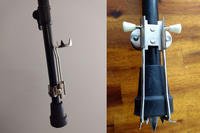Employee orientation, as a whole, is one of the most neglected functions of most organizations. Unfortunately, it becomes a check in the box rather than the important function required to help socialize any new employee into the norms and expectations that will help make them both successful.
Successful orientation programs for any employee accomplish the following (at a minimum):
- Reduce anxiety
- Reduce turnover
- Save time for the supervisor
- To set realistic expectations
- To let people know how things are done
- Give an opportunity to answer questions
There are some important cultural distinctions to keep in mind when a member of the armed services transitions into the civilian workforce. First and most obvious is the fact that the military has a very clear hierarchical structure. Rank is worn, literally, on your uniform (and understood by all).
There is no misunderstanding as to who's in charge, who gives the orders and who follows them. Furthermore, career growth and promotion opportunities are clear and distinct. Lastly, the focus is always on accomplishing the mission at hand; taking credit for the work doesn't matter. This level of camaraderie and collaboration within and among all branches of the military is simply a way of life and an unspoken understanding.
The civilian workforce tends to be more ambiguous. The chain of command is not always obvious and can be somewhat confusing (even for those with no military experience). The work environment may be flexible some days and not on others, and there is not always a standard or equal path to move up the career ladder.
This is not to say that military and civilian cultures do not and cannot mix. It is just a reminder to civilian employers that some extra time and attention may be warranted during an orientation period.
Tip No. 1
Make it clear to the veteran (new hire) how their work will fit into the company's plan for success. Veterans understand and respect how the work they do helps to accomplish the overall mission.
Tip No. 2
Explain how the veteran will be trained to handle new duties. Veterans are used to working with training plans that are realistic and measurable. On-the-job training is an important, and expected, part of every service member's career as they move from post to post.
Tip No. 3
Consider producing an organizational chart so the veteran learns the hierarchy of the office environment. It's not too early to provide information on how to access professional development opportunities, describe the structure of performance evaluations and discuss the path to career growth and promotions.
Tip No. 4
Ensure there are frequent check-in periods during the first weeks, months (and beyond) of employment. Many veterans who have transitioned to civilian careers will tell you they just don't have enough to do -- and thus they become bored and disillusioned.
Tip No. 5
Let the veteran know the process for discussing and requesting job accommodations (as you should for any new employee), preferably in written form. Not all wounded warriors will require or request accommodations or assistive technology to perform their jobs.
Most will probably not choose to disclose a disability, especially if it is invisible (such as post-traumatic stress disorder or traumatic brain injury) for various reasons. By providing a written process for requesting assistance, you have not only offered helpful information, but also have opened a door for discussion.
Lt. Cmdr. Chip Lutz, USN (Ret), works with leaders who want to lead better, get more done and leave a legacy. As commanding officer of two different naval facilities, both of his teams received national recognition for setting new standards of service while maintaining high morale and high retention among team members. He served as the director of security for Naval District Washington, D.C., during Sept. 11, 2001 -- where he was responsible for the safety and security of 25,000 people on six naval installations in the National Capital Region. Lutz has authored four books.
Find the Right Veteran Job
Whether you want to polish your resume, find veteran job fairs in your area or connect with employers looking to hire veterans, Military.com can help. Subscribe to Military.com to have job postings, guides and advice, and more delivered directly to your inbox.











